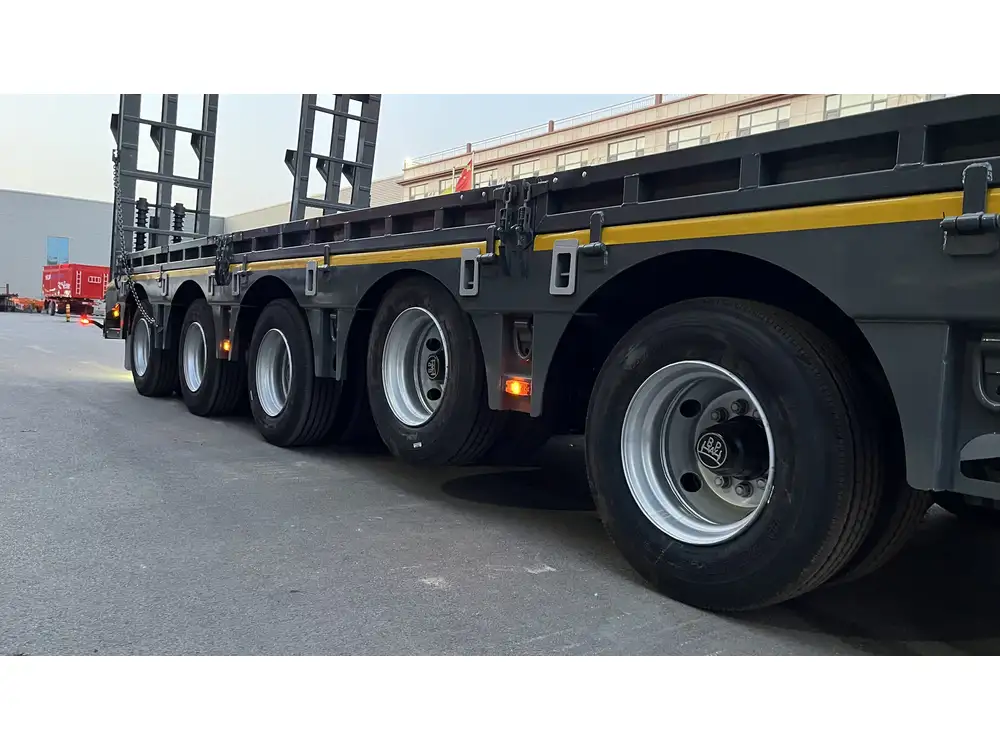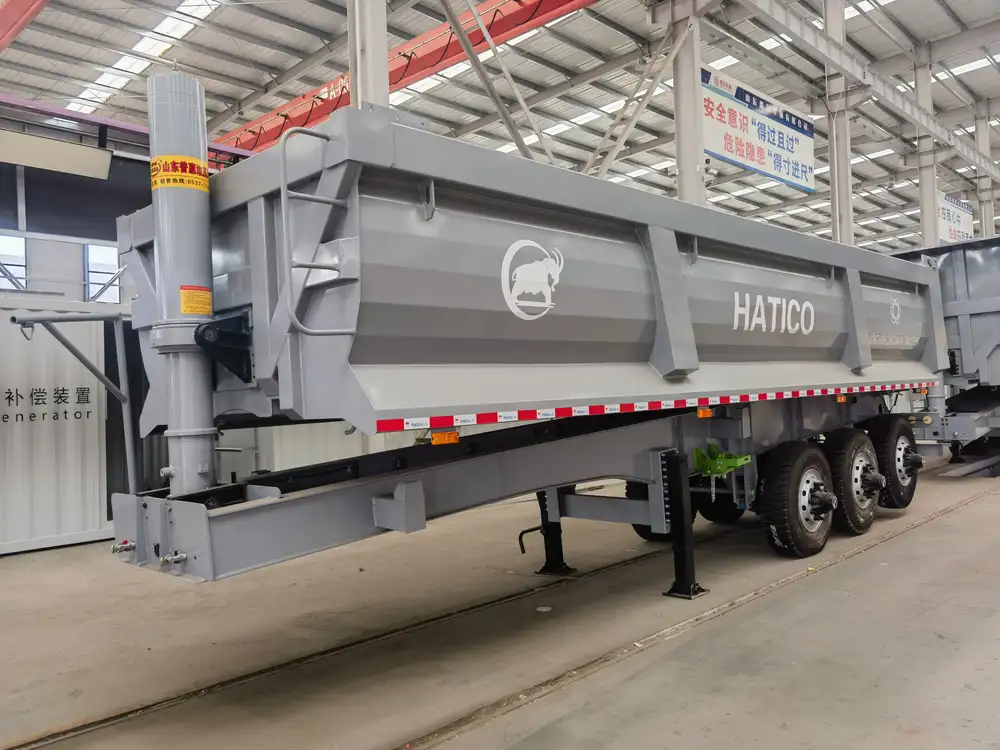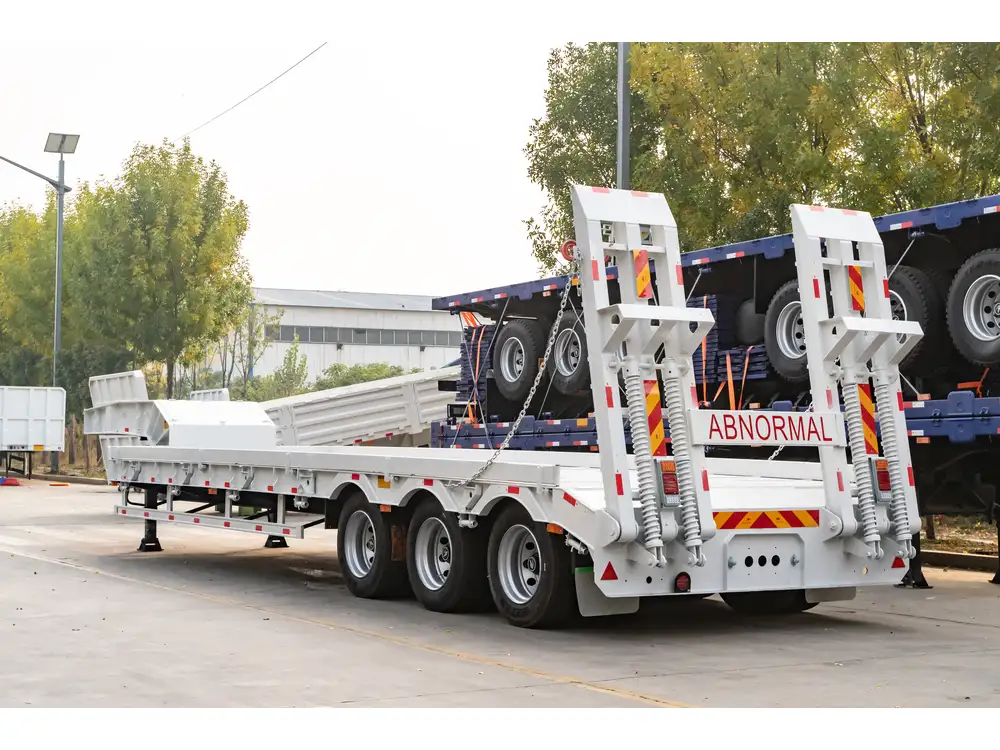In the world of transportation and logistics, understanding the weight of semi-trailers is paramount. Proper weight knowledge directly influences load capacity, fuel efficiency, and overall safety on the road. This comprehensive guide delves into the various aspects of semi-trailer weight, aiming to equip operators, fleet managers, and potential buyers with critical insights.
What Constitutes a Semi-Trailer’s Weight?
1. The Basics: Components of Weight
A semi-trailer’s total weight can be broken down into several fundamental components:
Tare Weight (Empty Weight): This is the weight of the semi-trailer itself without cargo. It encompasses the trailer’s structural elements, such as the chassis, axle setup, and any attached equipment.
Payload (Load Weight): This reflects the weight of the goods being transported. The payload can vary significantly depending on the type of goods and the specific needs of the operation.
Gross Vehicle Weight Rating (GVWR): This number represents the maximum weight that the semi-trailer is rated to safely carry, combining the tare weight and the payload. Exceeding this weight can result in dangerous driving situations and violations of transportation regulations.

2. Common Types of Semi-Trailers and Their Weights
Different semi-trailers serve distinct purposes. Here’s a comparative overview of some common types and their typical tare weights:
| Type of Trailer | Tare Weight (Approx.) | Payload Capacity (Approx.) | Total Weight (GVWR) |
|---|---|---|---|
| Standard Flatbed | 5,000 – 8,000 lbs | 48,000 – 52,000 lbs | 53,000 – 60,000 lbs |
| Reefer Trailer | 10,000 – 15,000 lbs | 40,000 – 44,000 lbs | 52,000 – 70,000 lbs |
| Dry Van Trailer | 10,000 – 15,000 lbs | 45,000 – 50,000 lbs | 65,000 – 80,000 lbs |
| Tank Trailer | 15,000 – 22,000 lbs | 30,000 – 37,000 lbs | 52,000 – 80,000 lbs |
| Lowboy Trailer | 10,000 – 18,000 lbs | 40,000 – 44,000 lbs | 60,000 – 80,000 lbs |
3. The Importance of Accurate Weight Measurements
Maintaining accurate weight visibility is vital for various reasons:
Regulatory Compliance: Each state has weight limitations for road usage. Ensuring that a semi-trailer and its cargo adhere to these regulations can save operators from significant fines and legal troubles.
Safety: Overloading a semi-trailer can affect braking distance, handling, and stability, leading to accidents.
Cost Efficiency: Understanding a trailer’s weight can help optimize loads, maximize payloads without exceeding limits, and improve overall fuel economy.
Factors Affecting Semi-Trailer Weight

1. Construction Material
The materials used in constructing a semi-trailer can greatly influence its weight. Common materials include:
Steel: Offers strength but is heavier, contributing to higher tare weight.
Aluminum: Lighter and increasingly popular, aluminum semi-trailers enhance payload capacity and fuel efficiency.
2. Configuration and Design
Variations in design impact weight. For instance:
Axle Count: Trailers with more axles often weigh more due to additional structural support, but they can carry heavier loads.
Length and Width: Longer trailers tend to have a higher tare weight.
3. Added Features and Equipment
Additional features such as lift gates, refrigeration units (in the case of reefers), or specialized loading units can increase the weight of the trailer.

Trends in Semi-Trailer Weight Regulation
1. Evolving Standards and Guidelines
As the freight industry adapts to modern demands, regulations concerning semi-trailer weight are also transforming. Key regulatory aspects include:
Federal Standards: The Federal Highway Administration sets regulations concerning weight limits on interstate highways, ensuring safety and minimizing road wear.
State Regulations: Each state may have specific weight regulations that add complexity to cross-state operations. It’s essential for fleet managers and operators to remain informed about varying state laws.
2. Weight Reduction Innovations
The industry is witnessing innovations aimed at reducing trailer weight, such as:
Advanced Materials: The use of composite materials is on the rise, promoting weight savings while ensuring durability.
Design Innovations: Alterations in design focusing on aerodynamics can enhance efficiency without compromising strength.

Calculating Payload Capacity: A Step-by-Step Guide
For operators to maximize their semi-trailer’s potential, calculating payload capacity is necessary. Here’s how to do it:
Identify the Tare Weight: Obtain the semi-trailer’s tare weight from manufacturer specifications.
Determine the GVWR: Use the rating found on the trailer identifiers.
Apply the Formula:
[ \text{Payload Capacity} = \text{GVWR} – \text{Tare Weight} ]
Example Calculation:
- Tare Weight: 12,000 lbs
- GVWR: 80,000 lbs
This means that this specific semi-trailer can safely carry 68,000 lbs of cargo.
Considerations for Selecting a Semi-Trailer

1. Intended Use
Understanding the primary use of a semi-trailer is crucial for choosing the right type. Consider:
Type of Cargo: Fragile goods may require a reefer, while construction materials fit better on a flatbed.
Transport Distance: Longer journeys may benefit from trailers with better aerodynamics and fuel efficiency.
2. Weight Distribution
Even with a correct total payload, improper weight distribution can lead to serious issues. Ensure that the weight is balanced across axles to prevent:
Tire Wear: Uneven weight can accelerate wear on tires, leading to costly replacements.
Handling Issues: Overloaded axles can create difficulties in steering and stopping.
3. Regulatory Adherence
Always check local and federal regulations regarding maximum weight limits to prevent legal issues. Additionally, ensure that you have the necessary permits for oversized loads, if applicable.

Frequently Asked Questions (FAQs)
Q1: What is the average weight of a loaded semi-trailer?
The average weight of a loaded semi-trailer typically ranges from 65,000 lbs to 80,000 lbs, but this can vary based on the type of cargo and trailer configuration.
Q2: How can I verify the weight of my trailer?
You can verify the weight of your semi-trailer using truck scales available at many weight stations and commercial truck stop locations.

Q3: What happens if my semi-trailer is overloaded?
Overloading a semi-trailer can lead to fines, safety issues, and increased wear on components such as tires and brakes, ultimately jeopardizing vehicle integrity and performance.
Q4: How does weight affect fuel consumption?
Heavier loads typically require more power from the engine, resulting in increased fuel consumption. Optimizing the load within safe limits can enhance fuel efficiency and save money.
Conclusion: Weight Knowledge Equals Operational Success
For anyone involved in the transportation and logistics industries, from fleet managers to drivers, understanding semi-trailer weight is not just an option; it’s a necessity. Accurate weight assessment, adherence to regulations, and the selection of appropriate trailers contribute significantly to operational efficiency and safety.
A well-informed choice leads to a well-managed operation, and proper knowledge helps in composing a smoother journey through the complex web of rules and logistics that characterize freight transport today. As industry standards evolve, staying abreast of these changes remains pivotal for success in the semi-trailer market.



